
Partners Developing Underwater Single Photon Imaging System
UK Research Ltd — are developing the laser system and environmental testing.RedWave Labs Ltd - are designing and building the rugged and compact control electronics for the 100 pico-second pulsed laser source.Photon Force Ltd - are developing a next-generation 1D SPAD array sensor and accompanying FPGA for onboard processing targeted at imaging through scattering environments.Heriot-Watt University — are applying their knowledge to the design of the transceiver system and single-photon imaging techniques, building on their extensive research and utilizing their test facilities.University of
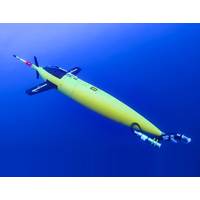
New Tech Frontiers for Ocean Gliders
from the vessel we were on so could time stamp the data and had good corroboration. We could also see machinery start up noise (in the data). In parallel, we developed signal processing, as part of a three-year knowledge transfer partnership with the University of Bath, using a low power, low footprint FPGA (field programmable gate array) to process data in real time.”They then looked at the initial four hydrophones and processed the data to beam form and get three beams – forward, aft and broadside, to get automated detections – proving this capability. The idea is that information
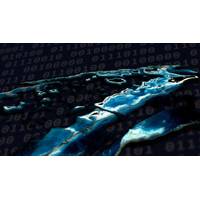
EOMAP Wins Funding for Next-Gen Satellite-Derived Bathymetry
global database of shallow-water bathymetry is hampered by the heavy computing power required to process the large amounts of data now available.The new funding will allow EOMAP to push ahead with new SDB procedures based on high-performance scientific computing employing field programmable gate arrays (FPGAs). FPGAs are semiconductor devices that can be programmed by the user. They are currently used in applications such as automotive and communication technologies. Their big benefits are their higher speeds and lower energy consumption compared to normal processors. However, the optimal interaction
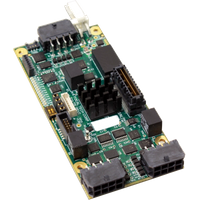
Moog Focal Releases New Expansion Card
size and modular expansion, via stacking connectors or harnesses, the 914-X series system enables flexible integration options in highly constrained spaces, as well as distributed node-based topologies for larger systems, typically using optical multiplexing, such as CWDM.Moog Focal's advanced FPGA-based design includes real-time diagnostics, field-upgradable firmware and software configuration. User configurable optical bandwidth provides system integrators with optimized, cost-effective solutions that can be easily reconfigured or extended in the future
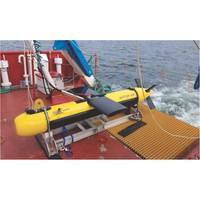
Meet Kraken’s Tentacle Autonomous LARS
pre-set operating thresholds. A movable light stack with audible alert provides a visual and audible indication of the operating status.Although not as fast as the neurons used in withdrawal reflexes in nature, the Tentacle Control System includes a real-time processor and field-programmable gate array (FPGA) for almost instantaneous and deterministic safety responses processed directly in hardware. This ensures all safety features and fail-safes react instantaneously, regardless of the operational state of the TentacleFuture DevelopmentWe believe the Tentacle Autonomous Launch and Recovery System and
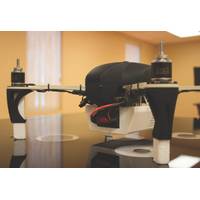
Atlantic Canada Profiles: Agile Sensor Technologies
allows a vehicle to calculate its position and orientation in high precision across three axes, which can then guide the vehicle to a specific docking location. The company has already worked with Boeing to implement AgilPose into a UAV landing/hover system. As AgilPose runs on the same FPGA architecture as Synapse, the team hopes to combine the two systems on an underwater platform by the end of 2017. (As published in the January/February 2017 edition of Marine Technology Reporter
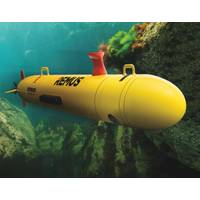
Hydroid Introduces the New Generation REMUS 100 AUV
The New Generation REMUS 100 features cutting-edge core electronics (CE) designed to replace not only the previous REMUS motherboard but also the CPU stack, emergency board and six serial cards. The new CE board is smaller and lighter than the components it replaces, and it uses an ARM +FPGA architecture that makes it both potent and versatile while consuming less than 5W of power—about 25 percent of the power required by the earlier version. • Flexible Navigation Suite: The New Generation REMUS 100 includes an exclusive conformal design, phased array transducer 600kHz
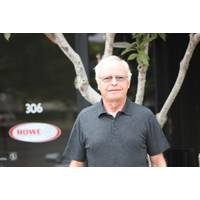
MTR100: Rowe Technologies
piston products and planar arrays. Our core competencies are: • Underwater Acoustics • Acoustic Imaging • Embedded Signal Processing • Advanced Electronic Design • Complex FPGA Design • Transducer Development and Manufacturing • Deep Ocean Design RTI’s electronics platform for ADCPs and DVLs is unique in the industry. The products have processing channel flexibility of up to 8 signal processing channels and high
L-3 Communications Klein Associates, Inc.
or more. The high background-to-shadow contrast ratio of the S5900 enhances bottom features and target definition while active motion compensation and advanced beam-forming technologies nullify blurring caused by tow body motion. The Klein UUV-3500 product line leverages a powerful – wholly FPGA implemented – multi-channel processing engine. The UUV 3500 operates exclusively with L-3 Klein’s proprietary wideband technology providing unmatched side scan range and resolution performance in a low power, compact and lightweight payload. The system electronics will easily integrate



 February 2024
February 2024





